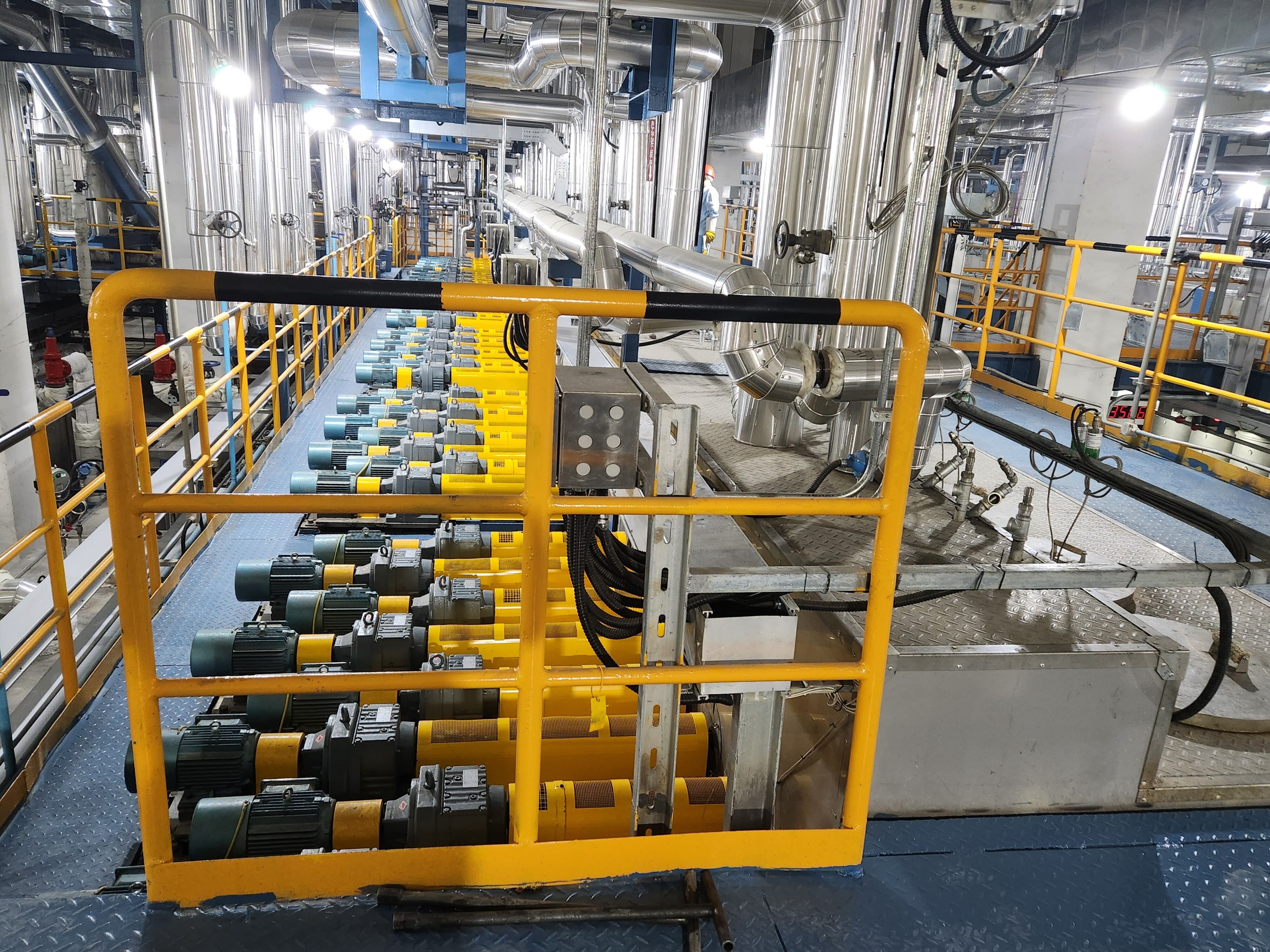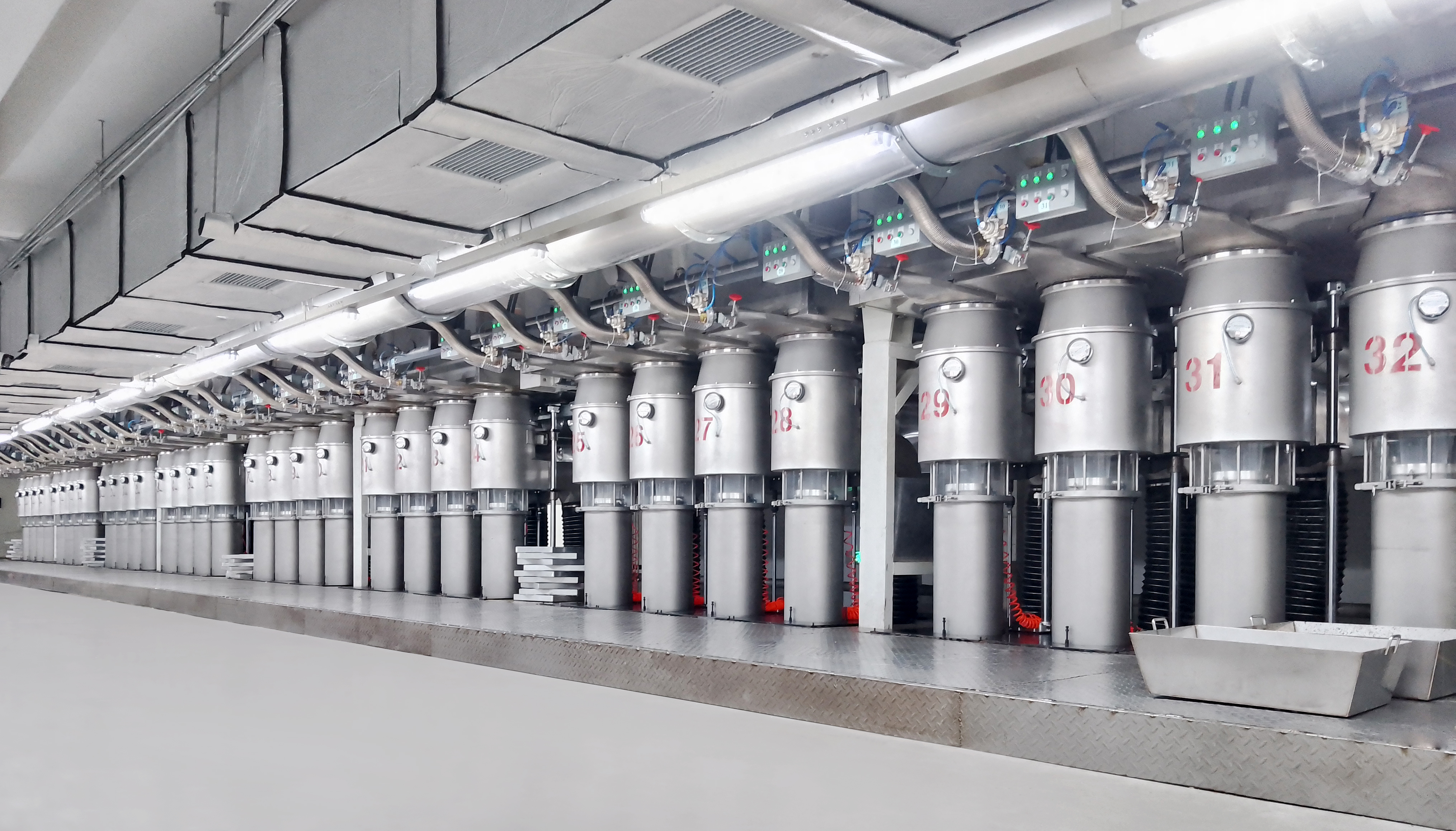Үлкен тиімділік, жақсартылған өнім сапасы және экологиялық сәйкестіктің артуына деген қажеттіліктерге байланысты ПЭТ (полиэтилентерефталат) талшықтарын өндіру технологиясындағы жаңалықтар барынша жылдам дамып келеді. Талшық шығаратын машиналардың жетілдірілуі ПЭТ талшықтарының түгелдей өндіріс процесін жеңілдетіп жатыр және жеңіл мата талшықтарынан бастап, жоғары беріктіктегі өнеркәсіптік талшықтарға дейін нарықтық талаптарды қанағаттандыруға мүмкіндік беруде. Алдыңғы қатарлы өнеркәсіптік шешімдер ұсынушы ретінде Шэньчжэнь Софтгем Технолоджи Ко Лтд компаниясы осындай жаңалықтарды енгізу жарық сезгіш талшықтарды өндіру технологиясының дамуы үшін қажеттілігін белгіледі. Ақылды жаңартулардан бастап энергияны үнемдеуге арналған жаңалықтарға дейін ПЭТ талшық жасау машиналарындағы негізгі технологиялық жетістіктерге тоқталамыз.
Кіріспе
Заттар интернеті (IoT) технологиясы — бұл үй жануарларының ластанған талшық жасау машинасының жұмыс істеуін түрлендіретін негізгі жаңашылдық. Өндірістік параметрлерді тексеру дәстүрлі түрде қолмен, уақытты көп алатын және қателерге бейім процесті қажет етті, бұл жиі біркелкі емес өнімдерге әкеп соқты. Қазір заманауи үй жануарларының ластанған талшық жасау машинасына ондаған сенсорлар орнатылған, олар балқу температурасын (PET чиптерді өңдеу үшін маңызды), экструзия жылдамдығы, суыту ауасының қысымы, талшық керілуі және орама тығыздығы сияқты негізгі көрсеткіштер бойынша нақты уақыт режиміндегі деректерді жинақтайды. Бұл деректер орталықтандырылған басқару панеліне жіберіледі, операторлардың машинаны нақты уақытта және қашықтан бақылауына мүмкіндік береді. Мысалы, машинадағы сенсор созылу бөлігіндегі қалыпсыз керілуді анықтап, талшықтың үзілуін және теңсіз қалыңдығын болдырмау үшін пайдаланушыға хабарлама жіберуі және кейбір түзетулерді ұсынуы мүмкін. Машиналардың алғын үлгілері деректерді талдау, өндірістік процестің тар орындарын (мысалы, тиімсіз суыту) анықтау және процесті оптимизациялауға көмектесу мүмкіндігіне ие.

Бұл IoT жаңашылығы PET талшық жасау машинасының тұрақтылығын және сенімділігін арттырады және қолмен жұмыс істеуді 40-50% азайтады. Сонымен қатар, әрбір PET талшық партиясының сапасы біркелкі болуын қамтамасыз етеді.
AI технологиясы PET талшық жасау машиналарындағы бейімделуші өндірісті түбегейлі өзгертті. AI-мен қамтамасыз етілген өндіріс қазірдің өзінде қолмен реттеуді талап етпейді. AI машиналары пайдаланылатын шикізат қасиеттері мен өндіріс параметрлеріне және соңғы өнімнің сапасына негізделген өндіріс тарихынан үйренеді. Машина нақты уақыт режиміндегі өндіріс деректеріне негізделе отырып өзін-өзі оптимизациялауды бастайды және бір өндіріс циклы ішінде әртүрлі түрдегі PET талшықтар үшін параметрлерді түзете алады. Мысалы, AI жүйесі автоматты түрде экструзия жылдамдығын төмендетіп, жеңіл, жұмсақ, инce PET мата талшықтарын шығару үшін суыту параметрлерін оптимизациялайды. Керісінше, өнеркәсіптік сүзгілерде қолданылатын үлкен беріктікті PET талшықтарын шығару үшін машина созылу кернеуін арттыру және жылумен өңдеу параметрлерін реттеу үшін ешқандай бақылаусыздықты талап етпейді. Бұл өзін-өзі оптимизациялау жүйесі қолмен басқару кезінде туындайтын адамзат қателерін азайтады. Мысалы, AI шикізатты басқару жүйесі қайта өңделген PET ұнтақ сапасындағы немесе бөлмедегі температурадағы өзгерістерге кез келген адам операторына қарағанда анағұрлым тез реакция береді.
Сонымен қатар, жасанды интеллект технологиясы PET талшық жасау машинасының алдын ала техникалық қызметін қамтамасыз етеді: бөлшектердің тозу деректерін (айналдыру шүмектері, конвейерлік таспалар және т.б.) талдау арқылы ол машиналардың істен шығуын апталар бойы алдын ала болжап, техникалық қызмет көрсету персоналын ескертеді, жоспарланбаған машина тоқтауларын 30-40% азайтады және машина қызметінің ұзақтығын арттырады.
Пет талшық жасау машиналары үшін тұрақты дамуды қамтамасыз ету және жаңа технологияларға бейімделу маңызды; тек қана қоршаған ортаны қорғау нормалары үшін ғана емес, сонымен қатар өндірушілердің шикізат шығындарын азайту, ресурстардың құнын арттыру және жалпы көміртегі ізін төмендету үшін де маңызды. Жылу қайтару жүйелері — бұл Пет талшық жасау машиналарының жаңашылдығы. Өндірісте ПЕТ ұнтағын қыздыру қымбатқа түседі және энергияны көп қажет етеді. Пластикті балқыту үшін 260 градустан жоғары температура қажет және балқыту процесін қайталап отыру керек. Көбінесе дәстүрлі Пет талшық жасау машиналары осы бағалы энергияның көп бөлігін жоғалтады. Қазіргі заманғы қондырғылар балқыту және қыздырып формаластыру кезеңдерінде пайда болатын жылу қалдықтарының көп бөлігін қайта қолданып, оны немесе шикі ПЕТ ұнтағын алдын-ала қыздыру үшін пайдаланады, не онда цехты жылыту үшін қажетті жылуды 25-35% дейін энергия үнемдеуге мүмкіндік береді. Ең соңғы модельдерді енгізу трикотаждық машиналарда тұтынушыдан кейінгі қалдықтарды қайта өңдеу мен қайта қолдану мүмкіндігін кеңейтеді. Шэньчжэнь Softgem компаниясының Пет талшық жасау машиналары сияқты алдыңғы қатарлы модельдер мен қайтару жүйелері тұтынушыдан кейінгі мата қалдықтарындағы жоғары көлемдегі ПЕТ қалдықтарын және ластану деңгейлерін қайта өңдей алады. Жаңартылған қоректендіру және қоспаларды жою жүйелері трикотаждық машинаға 50%-дан астам қайта өңделген ПЕТ қалдықтары бар сапалы шашақ талшық өндіруге мүмкіндік береді. Қайта өңделген ұнтақтар ұсақтау және дыбыстық энергия арқылы тазартылады. Бұл сонымен қатар таза ПЕТ шайырына деген қажеттілікті 20-25% азайтады. Осылайша пластик қалдықтарының қолданылуы көбейеді және полигона салынатын қалдықтар азаяды, бұл Пет талшық жасау машиналарының глобалды шаруашылықтың циклдық моделіне жетуге көмектеседі. Көптеген Пет талшық жасау машиналары жоғары пайдалы әсер коэффициентіне ие электрқозғалтқыштарға ие және өндіріс кезінде электрқозғалтқыштарға энергия беруді басқаратын энергия үнемдеу жиілік түрлендіргіштерін қолданады, осылайша тоқтап тұрған кездегі энергия үнемдеуді азайтады.

PET талшықтарына (мата, тоқымаға ұқсас өнімдер және негізінен өнеркәсіптік қолданыста) деген әлемдегі сұраныс өсе берген сайын, жоғары жылдамдықты және жоғары өнімділікті PET талшық жасау машиналарын жасау өте маңызды болып табылады. Ескі PET талшық машиналарының айналдыру мен орамалау процестеріне байланысты өндіріс жылдамдығы шектеулі болып келеді, кейбір машиналар минутына тек 300-400 метр талшық өндіре алады. Қазіргі заманғы PET талшық машиналарында көбірек PET балқымасымен жұмыс істейтін жоғары өнімді экструдерлер, көп валдық жетілдірілген созу қондырғылары және талшықты иірімдерге тиімді орап, шиыршықтардың шатастыруынсыз үлкен орамаларға орау үшін жасанды интеллект орамалау жүйелері қолданылады. Мысалы, қазіргі PET талшық жасау машинасы минутына 800-1000 метр талшық өндіруі мүмкін, бұл ескі үлгілердің өндіріс жылдамдығынан екі еседен де асады. Өндіріс жылдамдығы машиналардың тәуліктік өндірісін 20-30 тоннадан 80-100 тоннаға дейін көтеруге көмектеседі. Бұл конструкция сонымен қатар машина үлкен тапсырыстарды тиімді өндіру үшін өндірісте тиімді көмектесу қабілетін арттырады. Үздіксіз өндіріс үшін материалды алмастыру үшін тоқтаулардың санын азайтатын шиыршықтар мен модульді сорғыш жүйелермен машиналар жобаланған.
Заводтың жалықа немесе жабдықтың тозуы сияқты тұрақты шығындарды көбірек өнімдерге тарату арқылы бұл жаңартулар ПЭТ талшықтарының бірлік құнын да төмендетеді.
PET талшық өнімдері дәлдік пен біркелкілікті жақсартуға бағытталған технологияда тез дамыды. Бұл жетістіктердің бірі — вискозалық талшық жасау машиналарына сызықтық сапа талдау жүйелерін енгізу болып табылады. Мұнда сапа талдау жүйелері жоғары анықтықтағы камера кадрлары мен лазерлік талдау арқылы нақты уақыт режимінде ақауларды анықтайды. Осындай ақауларға талшық диаметрлерінің біркелкі болмауы (бұрынғы өндірістің сипаты), талшықтың бөгде материалдармен ластануы және жіпшелердің қысылуы жатады. Вискозалық талшық жасау машиналары сапасыз өнімдерді шығарып тастауға немесе сапаны қамтамасыз ету үшін ақауды түзету параметрлерін нақты уақытта реттеуге мүмкіндік береді. Мысалы, ісінген талшықтарды реттеу үшін жоғары қысымды ауа салқындату жүйелері қолданылады. Вискозалық талшық жасау машиналарындағы ең соңғы жетістік — көпфункционалды иіру модульдерінің дамуы болып табылады. Осы иіру модульдері талшық өндірушілерге әртүрлі параметрлер жиынтығы бойынша тұтынушыға лайықтап жасалған вискозалық талшықтар жасау мүмкіндігін береді. Жіңішке киімдер үшін жеңіл 0,5D талшықтан бастап ауыр жұмыс үшін 20D қалың талшыққа дейін немесе дөңгелек, қуысты немесе үшбұрышты көлденең қималы, ылғалды сіңіре алатын немесе медициналық мата үшін антибактериалды қабықшамен қосымша қасиетке ие болатын тұтынушыға лайықтап жасалған талшықтарға дейін.
Мысалы, талшық жасау қондырғыларымыздың бірі бір сағаттан кем уақыт ішінде оң қуысты PET талшықтар (жеңіл көрпелерді толтыру үшін қолданылады) шығарудан қатты PET талшықтар (берік киім жасау үшін қолданылады) шығаруға дейін өз функциясын өзгерте алады. Бұл икемділік әртүрлілікті арттырады, сонымен қатар барлық түрлі PET талшықтарының біркелкі жоғары сапасын қамтамасыз етеді. Сапа мен функционалдықтың осы көпқырлылығы мата, тоқымаға қоспа материалдар және автомобиль іштері сияқты әртүрлі салалардағы тұтынушылардың кең талаптарын қанағаттандырады.
 Қызықты жаңалықтар
Қызықты жаңалықтар2024-07-25
2024-07-25
2024-07-25